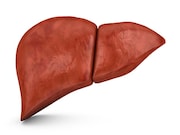However, liver graft discard from older donors remained increased from 2003 to 2016
WEDNESDAY, Feb. 13, 2019 (HealthDay News) — From 2003 to 2016, liver graft loss and mortality improved among recipients of liver grafts from older donors, according to a study published online Feb. 13 in JAMA Surgery.
Christine E. Haugen, M.D., from the Johns Hopkins University School of Medicine in Baltimore, and colleagues conducted a prospective cohort study involving 4,127 liver grafts from older donors and 3,350 liver-only recipients of older donor grafts and 78,990 liver grafts from younger donors (aged 18 to 69 years) and 64,907 liver-only recipients of younger donor grafts.
The researchers found that 747 liver grafts from older donors were discarded from 2003 to 2016. Liver grafts from older donors were more likely to be discarded versus those from younger donors in 2003 to 2006, 2007 to 2009, 2010 to 2013, and 2013 to 2016 (adjusted odds ratios, 1.97, 2.55, 2.04, and 2.37) after adjustment for donor characteristics other than age and accounting for Organ Procurement Organization-level variation. Over time, there was a decrease in the proportion of liver grafts from older donors among all adult liver transplants (6.0 to 3.2 percent). Outcomes improved in recipients of grafts from older donors over time, with reduced graft loss and mortality risk (adjusted hazard ratios, 0.60 and 0.59, respectively) in 2010 to 2016 versus 2003 to 2009.
“As a transplant community, we need to embrace innovation in the allocation of older donor livers to enable better utilization,” write the authors of an accompanying editorial.
Copyright © 2019 HealthDay. All rights reserved.








